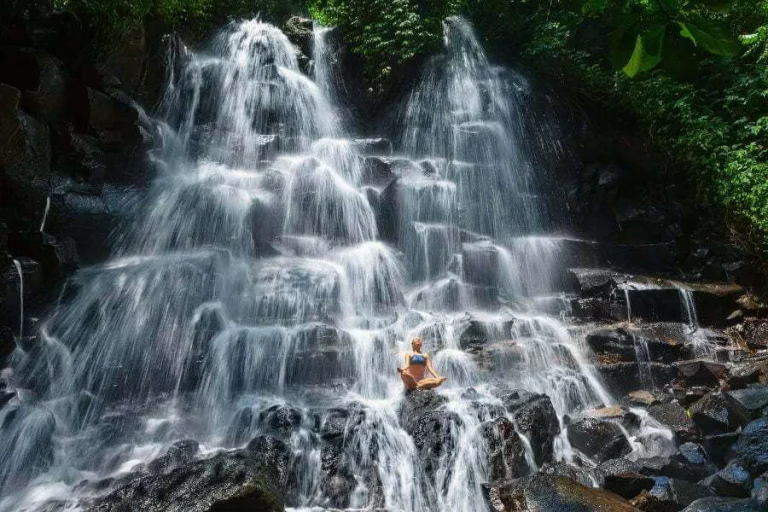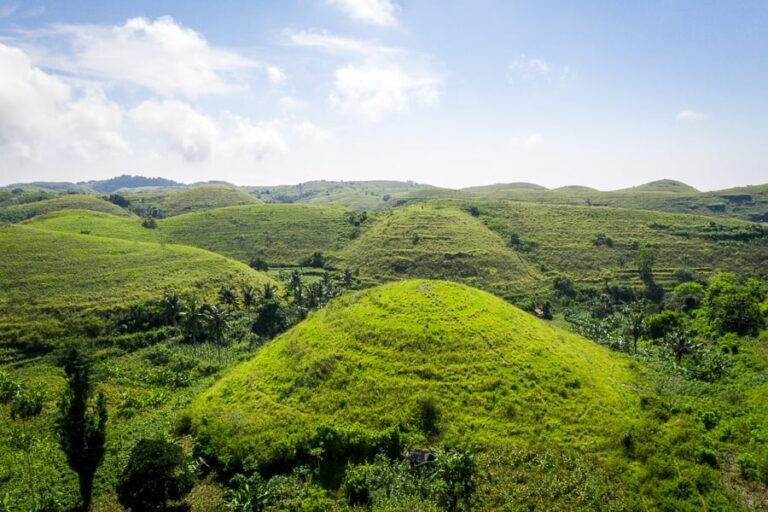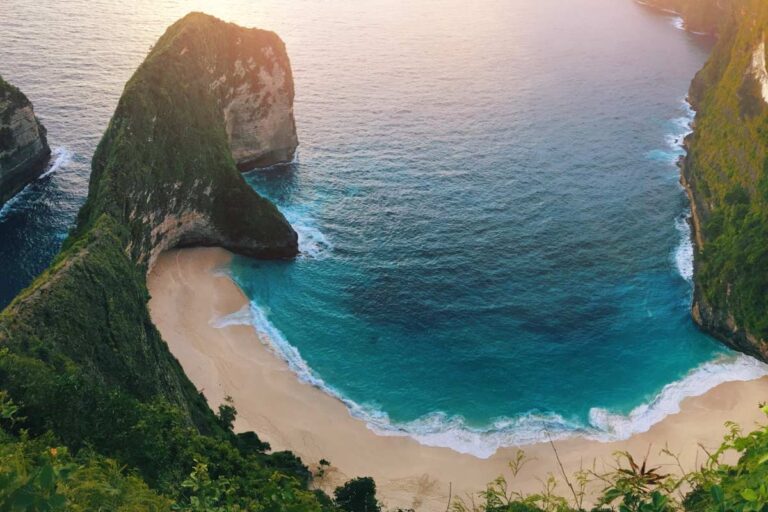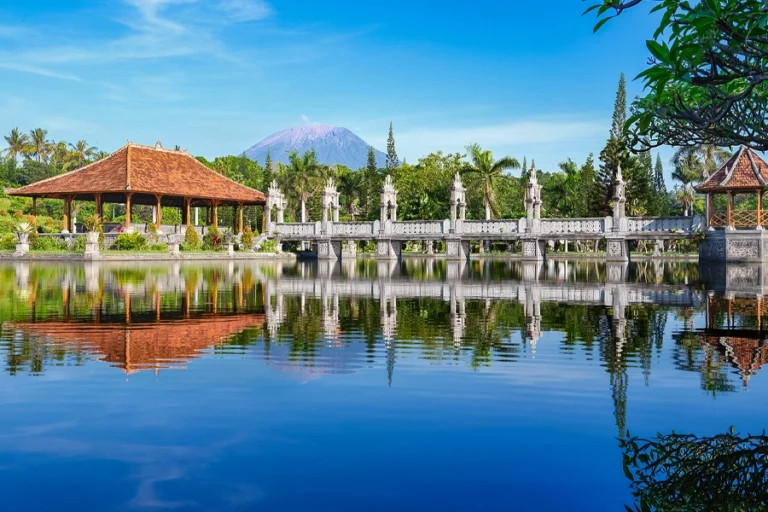
As you wander the village’s immaculate stone pathways, flanked by perfectly aligned traditional Balinese homes, you’ll be transported to an era untouched by modern chaos. Each house is a tribute to centuries-old architecture, crafted with devotion and care. The village layout itself reflects the Tri Hita Karana philosophy, emphasizing balance between humanity, nature, and the divine.
One of Penglipuran’s most captivating features is its sacred bamboo forest—a tranquil expanse that offers not only cool shade, but also a sense of peace and wonder. It’s an ideal spot for nature lovers and those seeking a quiet escape.
What truly sets Penglipuran apart, however, is its people. The locals don’t just preserve their culture—they live it every day. With genuine hospitality, they open their doors and hearts to visitors. Participate in daily offerings, observe traditional ceremonies, or simply share a conversation to gain insight into the island’s spiritual rhythms. Here, you’re not just observing Balinese life—you’re welcomed into it.
For travelers in search of authenticity, cultural richness, and peaceful beauty, Penglipuran is more than a destination—it’s an experience. Let this village be your sanctuary, where you reconnect with Bali’s origins and take home memories that resonate far beyond your stay.
Entrance Fee
As of January 2025, the entrance fee for Penglipuran Village is IDR 50,000 (approximately USD $3.57) for adults and IDR 30,000 (approximately USD $2.14) for children aged 3 to 12 years. Children under 3 years old may enter free of charge. These fees contribute to the preservation of this culturally significant site and help maintain the village’s unique charm and cleanliness.
Your admission grants access to explore the village’s beautifully preserved Balinese homes, serene walking paths, cultural pavilions, and the iconic bamboo forest. It’s a unique chance to step into the authentic rhythms of traditional Balinese life and appreciate its timeless values.
Please bring sufficient cash, as card payments are not accepted at the entrance. We also recommend having extra cash on hand for local snacks, refreshments, or handmade souvenirs available in the village.
To ensure a smooth and enjoyable visit, we recommend confirming the latest fee structure and visiting hours before you go, especially during local holidays or festivals when conditions may vary.
Address & Accessibility
Welcome to Penglipuran Village, a serene and picturesque traditional village nestled in the heart of Bangli Regency, Bali. You can find it at: Penglipuran Village, Jalan Penglipuran, Bangli 80613, Bali, Indonesia.
The village is easily accessible by road, making it a convenient destination whether you’re traveling by private car, scooter, or with a tour group. From Ubud, the journey takes approximately 45 minutes, while from Denpasar or Seminyak, it’s about 1.5 to 2 hours, depending on traffic.
As you stroll through the village’s neatly maintained stone paths and take in its charming architecture and lush bamboo forest surroundings, comfortable walking shoes are highly recommended. Exploring Penglipuran is not just a visit—it’s a peaceful, immersive walk through one of Bali’s best-preserved cultural gems.
How to Get to Gunung Kawi Temple
Getting to Penglipuran Village is simple and enjoyable, with several transportation options to suit your travel style and starting point:
By Private Car
Driving to Penglipuran is one of the most convenient and flexible options. If you’re staying in popular areas such as Ubud, Kuta, Seminyak, or Sanur, you can easily rent a car or hire a private driver for a comfortable journey. The roads are well-maintained, and ample parking is available near the village entrance.
By Taxi or Ride-Hailing Apps
For those who prefer not to drive, taxis or ride-hailing services like Grab and Gojek are readily available across Bali. While this option may be slightly more expensive than self-driving, especially from farther locations, it offers a convenient and stress-free way to reach the village.
With a Guided Tour
For a hassle-free and enriching experience, consider joining a cultural tour that includes Penglipuran Village. Foki Bali Tour offers well-curated itineraries that often combine this charming village with must-see destinations like Tegenungan Waterfall, Tirta Empul Temple, and the scenic Tegalalang Rice Terraces—making it a convenient and immersive way to explore Bali’s cultural gems.
No matter how you choose to travel, the journey to Penglipuran promises scenic countryside views and a rewarding cultural experience upon arrival.
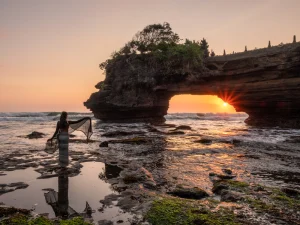
15 Best Things to Do in Bali (2025 Guide)
Bali, also known as the Island of the Gods, is a destination that offers a perfect blend of culture, adventure, and natural beauty. From sacred temples and lush rice terraces to thrilling adventures and serene beaches, here are the 15 best things to do in Bali for an unforgettable trip.

Bali Adventure Tours – Thrills Await in Paradise
Get ready to ignite your adventurous spirit with our Bali Adventure Tours! From conquering the summit of Mount Batur at sunrise to white-water rafting through lush jungles, ATV rides across scenic villages, and snorkeling in crystal-clear waters, our tours are designed for adrenaline seekers and nature lovers alike. With expert
Opening Hours
Penglipuran Village welcomes visitors daily from 9:00 AM to 6:00 PM. These hours offer ample time to explore the village’s beautifully preserved homes, walk along its peaceful, stone-paved paths, and engage with the local community.
For a more tranquil experience, it’s recommended to visit early in the morning or late in the afternoon, when the weather is cooler and the village is less crowded—perfect for taking photos or enjoying the serene atmosphere.
Please note that on days of traditional ceremonies or religious festivals, certain areas of the village may be restricted to locals only. These events offer a rare glimpse into Balinese culture in its most authentic form, and visitors are encouraged to observe respectfully and follow any guidelines or signs posted by the community.
Best Time To Visit

The best times to explore Penglipuran Village are early in the morning around 9:00 AM or later in the afternoon around 4:00 PM. These quieter hours provide a more intimate experience, allowing you to wander the peaceful pathways and engage with the local community away from larger tour groups and the midday heat.
For ideal weather conditions, plan your visit during Bali’s dry season, which runs from April to October. During these months, you’ll enjoy clear skies, lower humidity, and more pleasant temperatures—perfect for strolling through the village and admiring its traditional Balinese homes and scenic surroundings.
Even during the rainy season (November to March), mornings are typically dry, making early visits a great option year-round.
If your trip coincides with a local cultural or religious festival, consider it a special opportunity. While some areas may be temporarily reserved for ceremonies, it’s a unique chance to witness the deep spiritual traditions and vibrant cultural life that define Penglipuran’s enduring charm.
What to See & Do
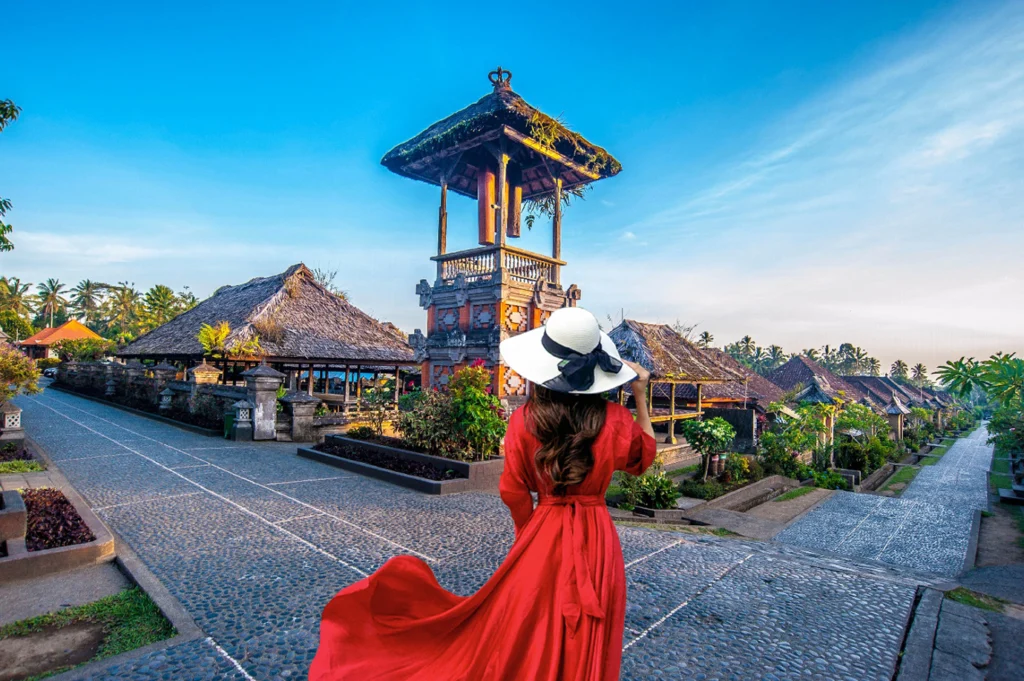
Penglipuran Village invites visitors to immerse themselves in a serene blend of cultural richness and natural beauty. Below are the highlights you won’t want to miss during your visit:
1. Admire Traditional Balinese Architecture
As you stroll through the village, you’ll be surrounded by rows of beautifully preserved traditional Balinese houses. Built in harmony with ancient architectural principles, each home faces the same direction and features ornate gates, neatly kept gardens, and stone-paved paths. The village’s symmetrical layout reflects a deep connection to spiritual and cultural values passed down through generations.
2. Walk Through the Enchanting Bamboo Forest
Just outside the village, the peaceful Bamboo Forest awaits. This tranquil grove of towering green stalks creates a dreamlike atmosphere perfect for a nature walk, meditation, or simply escaping into the calm of Bali’s natural landscapes. It’s a quiet retreat that complements the cultural exploration within the village itself.
3. Connect with Local Life and Culture
Penglipuran is more than just a picturesque village—it’s a living cultural museum. Engage with friendly locals who are proud to share their heritage. Watch as artisans create traditional handicrafts, or observe the daily rituals and offerings that mark the rhythm of Balinese life. If you’re lucky, you might even catch a spontaneous dance or music performance.
4. Witness Sacred Ceremonies and Festivals
If your visit coincides with a local religious event or festival, you’ll have the chance to witness age-old ceremonies and spiritual traditions in action. These moments provide rare insights into Balinese Hindu practices and the communal values that keep the village closely knit. Be respectful—these are sacred times for the locals.
5. Taste Authentic Balinese Food
Treat your taste buds to traditional Balinese cuisine prepared by local cooks. Whether it’s savory satay, nasi campur, or sweets made from coconut and palm sugar, the food here reflects the essence of Bali—simple, fresh, and full of flavor. Look for warungs (small eateries) within the village for an authentic meal experience.
6. Capture the Magic Through Your Lens
Photography enthusiasts will find endless inspiration here. From the intricate architecture and scenic bamboo trails to daily village life and sweeping views of Bangli’s lush landscapes, Penglipuran offers picture-perfect moments at every turn. For the best lighting and atmosphere, plan your shots during golden hour—just after sunrise or before sunset.
Nearby Best Restaurants

After immersing yourself in the serene beauty and cultural richness of Penglipuran Village, treat your taste buds to the diverse flavors of Balinese cuisine at these nearby restaurants. Whether you’re in the mood for a quick local bite or a scenic lunch surrounded by rice fields, there’s something for every preference.
- Warung Makan Bu Rus. Located just outside the entrance to Penglipuran Village, this humble eatery serves up authentic Balinese home-cooked meals. Dishes like nasi campur, ayam betutu, and sambal matah are prepared fresh and served in a cozy, local setting. It’s a great place to enjoy traditional flavors without venturing too far.
- Penglipuran Traditional Café. Situated within the village itself, this small café offers visitors a chance to relax with a cup of Balinese coffee or herbal tea while soaking in the surrounding architecture. Light snacks like fried bananas and cassava chips are available, perfect for a mid-morning or afternoon break.
- Warung Ada Di Sini. A short drive from Penglipuran, this warung is known for its casual ambiance and friendly service. It serves hearty Indonesian meals and offers vegetarian options as well. The restaurant overlooks the scenic hills of Bangli, making it a peaceful stop for lunch or an early dinner.
- D’Alas Warung. Located near Kehen Temple, just 10 to 15 minutes away, D’Alas Warung offers a delightful dining experience amidst lush rice fields. It’s known for its crispy duck, grilled fish, and refreshing juices. The open-air concept and rustic wooden furniture add to the relaxing rural vibe—ideal for those wanting a tranquil meal with a view.
- Bumbu Bali Restaurant – Bangli. Situated in Bangli town center, this restaurant combines traditional décor with a wide array of Balinese dishes. Popular for group dining and cultural experiences, Bumbu Bali offers satay, soups, and local desserts in a comfortable indoor setting.
Nearby Best Hotels

- The Candi Village. Nestled just a short drive from Penglipuran, The Candi Village offers a peaceful escape surrounded by lush greenery and traditional Balinese design. The atmosphere is calm and refreshing—perfect for unwinding after a day of cultural discovery.
- Omah Apsari Resort. Located in the heart of Bangli, this boutique resort combines Balinese elegance with modern comfort. Guests enjoy serene gardens, refined architecture, and an intimate setting that reflects the island’s spirit. Ideal for those seeking a luxurious yet authentic retreat.
- Omah Apsari Resort. Located in the heart of Bangli, this boutique resort combines Balinese elegance with modern comfort. Guests enjoy serene gardens, refined architecture, and an intimate setting that reflects the island’s spirit. Ideal for those seeking a luxurious yet authentic retreat.
- The Natak Resort. A stunning resort known for its private pool villas and scenic tranquility. Conveniently close to Penglipuran, The Natak Resort is the perfect blend of privacy and access, making it a favorite for honeymooners or anyone wanting a touch of indulgence during their cultural exploration.
- Pura Bali Resort. Set among rice fields and forest views, Pura Bali Resort delivers a harmonious balance of Balinese charm and contemporary amenities. With spacious rooms, warm hospitality, and peaceful gardens, it’s a rejuvenating escape from the busier parts of the island.
- Bangli Green Villas. For those seeking a quiet nature retreat, Bangli Green Villas offers cozy, well-appointed spaces amidst a tropical backdrop. The villas are ideal for travelers who appreciate simplicity, comfort, and a connection to Bali’s natural environment.
- Bukit Bali Eco Resort. Perfect for eco-conscious visitors, this sustainable resort emphasizes harmony with nature. From bamboo architecture to organic gardens, every detail supports an earth-friendly lifestyle while maintaining comfort and charm. A meaningful stay for mindful explorers.
Nearby Attractions

- Besakih Temple (Pura Besakih). Often referred to as Bali’s “Mother Temple,” Besakih is the largest and holiest Hindu temple complex on the island. Nestled on the sacred slopes of Mount Agung, it boasts breathtaking views and a deep sense of spiritual reverence. A visit here offers insight into Bali’s religious traditions and grand temple architecture.
- Mount Batur & Kintamani. Marvel at the majestic Mount Batur, an active volcano surrounded by a dramatic caldera and the serene Lake Batur. Adventurous travelers can embark on a pre-dawn trek to catch sunrise from the summit—an unforgettable experience with panoramic views of Bali’s volcanic heartland.
- Tukad Cepung Waterfall. Hidden within a rock cave, Tukad Cepung is one of Bali’s most magical waterfalls. As sunlight pours through the cliff opening above, the cascading water shimmers in golden light—creating a stunning natural spectacle for photographers and nature lovers alike.
- Kanto Lampo Waterfall. A beautiful cascade over natural rock steps, Kanto Lampo is easy to access and perfect for a refreshing dip. Its picturesque setting, with surrounding tropical forest, makes it a favorite stop for those exploring central Bali.
- Tibumana Waterfall. Peaceful and relatively uncrowded, Tibumana offers a tranquil escape. Surrounded by dense jungle and accessible via a scenic path, this waterfall invites you to swim beneath its gentle flow or simply relax in its serene atmosphere.
- Tirta Empul Temple. This sacred water temple is famous for its holy spring water used in purification rituals. Visitors are welcome to participate in the spiritual bathing tradition or observe the devout practices of local Balinese Hindus. The temple’s serene ambiance and historic significance make it a must-see.
- Tegallalang Rice Terraces. One of Bali’s most iconic landscapes, the Tegallalang Rice Terraces offer a breathtaking display of terraced hills and traditional irrigation systems (subak). Ideal for photography and gentle walks, this UNESCO-recognized site showcases the harmony between nature and Balinese farming culture.
- Campuhan Ridge Walk. Located in nearby Ubud, the Campuhan Ridge Walk is a gentle trekking trail offering sweeping views of rice fields and river valleys. It’s a great way to enjoy Bali’s natural beauty away from the crowds.
- Goa Gajah (Elephant Cave). Explore the mystical stone-carved entrance of this ancient archaeological site, dating back to the 11th century. Inside, you’ll find bathing pools, meditation caves, and intricate carvings—offering a quiet, reflective journey through Bali’s early history.
Historical Background, Mythology & Legends

Penglipuran Village, located in the highlands of Bangli Regency, is one of the best-preserved traditional villages in Bali. Its origins date back centuries, believed to be established by a group of villagers from Bayung Gede who migrated to this area with the intention of creating a settlement rooted in Tri Hita Karana—the Balinese philosophy of harmony between humans, nature, and the divine.
The village’s layout reflects this philosophy: homes are arranged symmetrically along a central walkway, each with uniform architecture and a family temple, embodying the spiritual and communal values that guide everyday life. The word “Penglipuran” itself is derived from Pengeling Pura, meaning “a holy place to remember the ancestors.”
Local legend holds that the founders of Penglipuran were guided by ancestral spirits to settle in this harmonious environment. The surrounding bamboo forest is believed to be sacred, inhabited by protective spirits that help maintain the spiritual balance of the village.
A strong belief in guardian spirits influences daily offerings and ceremonies, especially those performed at Pura Penataran, the village’s main temple. It is said that any disrespectful action—such as speaking loudly, littering, or violating temple rules—could disturb the spirits and bring misfortune.
These deeply held beliefs and mythological roots continue to shape the community’s customs and reinforce their commitment to cultural preservation and environmental sustainability.
Why Visit Penglipuran Village?
Penglipuran Village is more than just a destination—it’s an experience that brings you face-to-face with the heart of Balinese culture. Here’s why this tranquil village deserves a spot on your Bali itinerary:
1. A Living Showcase of Authentic Balinese Culture
Penglipuran is one of the few remaining places in Bali where traditional customs and community values are fully preserved. From the daily offerings to the ceremonial dress of its residents, the village offers an immersive glimpse into a way of life that has been lovingly maintained for generations.
2. Timeless Traditional Architecture
Every home in Penglipuran follows strict architectural harmony, complete with iconic entrance gates and intricate stonework. The layout of the village reflects the Tri Hita Karana philosophy—a Balinese concept that emphasizes harmony between humans, nature, and the spiritual world.
3. Peaceful Natural Environment
Set amid cool highland air and framed by a lush bamboo forest, Penglipuran offers a serene escape from Bali’s bustling tourist areas. Whether you’re walking down its stone-paved paths or soaking in the views of the nearby hills, the village provides a setting that encourages relaxation and mindfulness.
4. Meaningful Cultural Immersion
What sets Penglipuran apart is the opportunity for real connection. Visitors are welcomed warmly by the villagers, often invited to observe or even participate in ceremonies, crafts, and daily routines—creating a rich, hands-on cultural experience.
5. Sustainable and Eco-Friendly Practices
Penglipuran is recognized for its commitment to eco-tourism. The community actively preserves its environment by maintaining clean streets, protecting the surrounding bamboo forest, and minimizing waste, making it a model village for sustainable travel in Bali.
6. Convenient Access to Other Iconic Sites
Ideally situated in Bangli Regency, Penglipuran makes a great base or stopover on a journey to other notable attractions such as Mount Batur, Tirta Empul Temple, Tukad Cepung Waterfall, and Kintamani. It’s an excellent addition to any cultural or nature-focused Bali itinerary.
Know Before You Go
To ensure a smooth and respectful visit to Penglipuran Village, here are some essential tips and insights to keep in mind:
Dress Modestly
As a living traditional village with strong cultural and spiritual values, visitors are expected to dress respectfully. Wear modest clothing that covers your shoulders and knees. Sarongs are not always required, but bringing one is a good idea, especially if you plan to visit any nearby temples.
Be Respectful When Taking Photos
Photography is welcomed throughout the village, but always ask permission before taking pictures of residents—especially during ceremonies or while they’re engaged in daily activities. Avoid entering private homes unless invited.
Opening Hours
The village is open daily from 9:00 AM to 6:00 PM. Visiting early in the morning or later in the afternoon is recommended for a quieter, more peaceful experience.
Entrance Fee
As of 2025, the entrance fee for international visitors is:
- IDR 50,000 per adult (≈ USD $3.57)
- IDR 30,000 per child aged 3–12 (≈ USD $2.14)
Children under 3 years old usually enter for free.
Cash only is accepted, so bring enough for entrance, parking, and any snacks or souvenirs.
Accessibility
The village is easily accessible by car, scooter, or taxi. Parking is available near the entrance. While the roads are in good condition, parts of the village have cobbled pathways, so comfortable footwear is recommended.
Support Local Artisans
There are small stalls and homes where locals sell crafts, snacks, and drinks. Purchasing souvenirs directly supports the village economy and helps preserve local traditions.
Village Etiquette
Penglipuran is not a museum—it’s a functioning village. Be mindful of your behavior:
- Keep noise levels down
- Avoid littering
- Refrain from entering homes or ceremonial spaces unless invited
- Respect any signs or directions from locals
Cultural Events & Ceremonies
If you’re lucky enough to visit during a traditional festival or ceremony, you’ll witness the village’s spiritual life in full display. However, some areas may be temporarily closed to outsiders—respect these boundaries and observe quietly.

